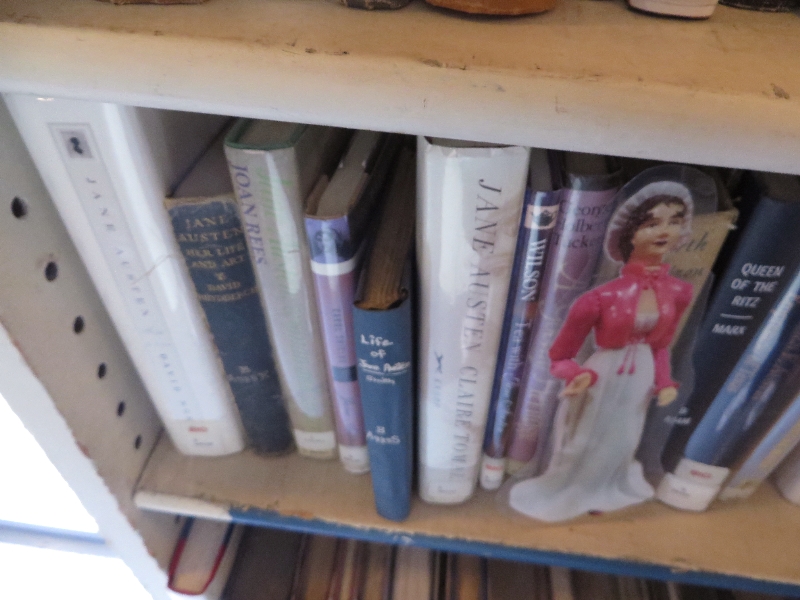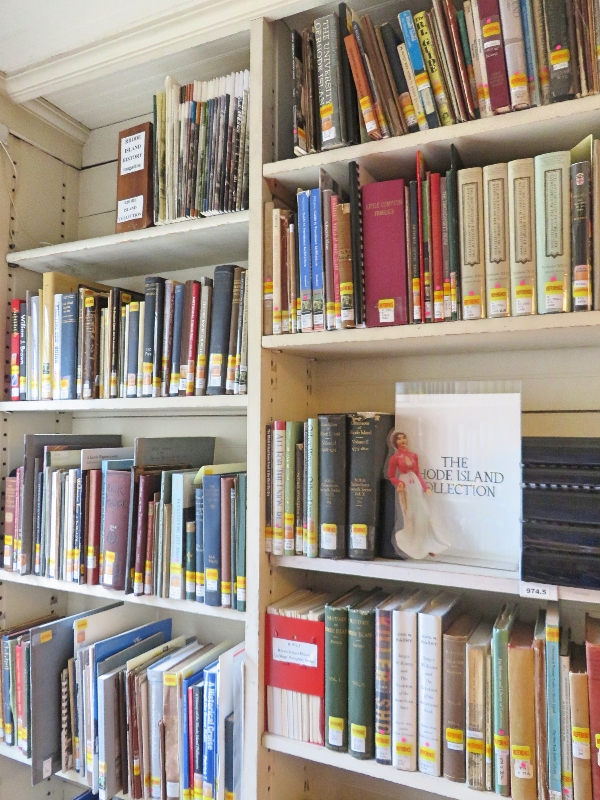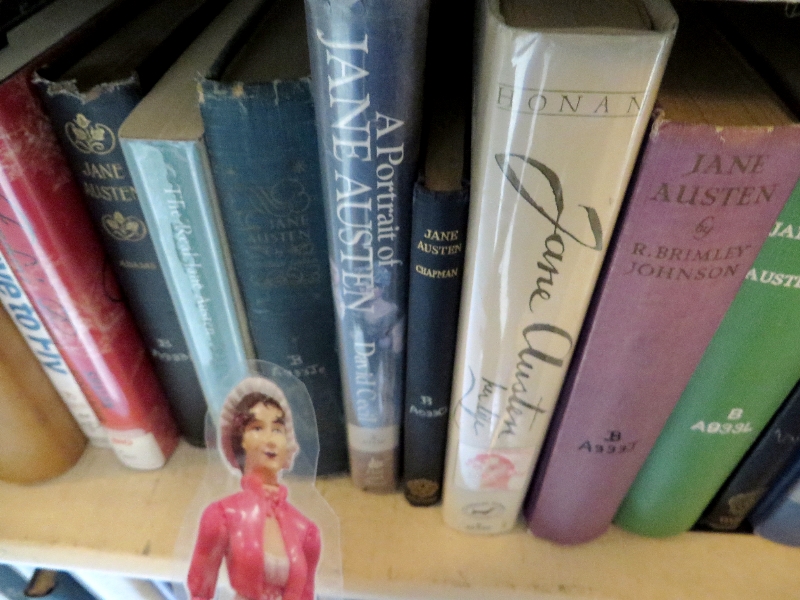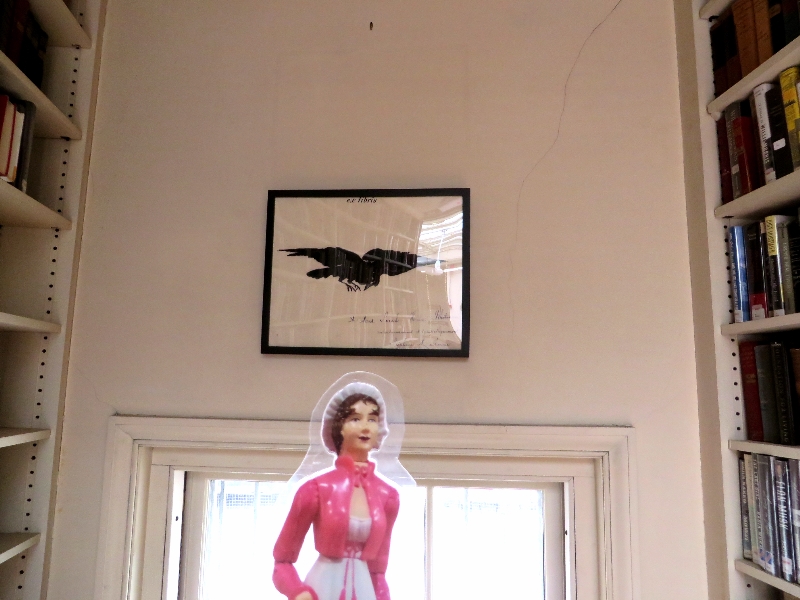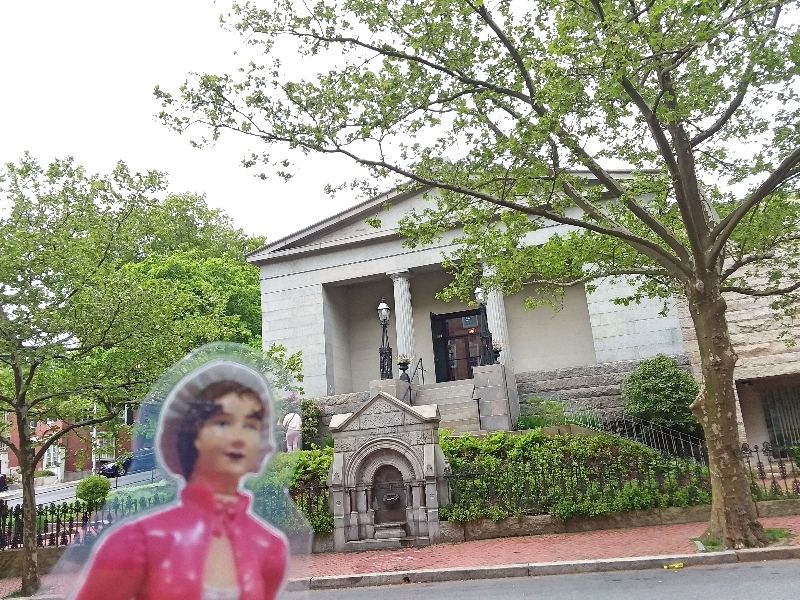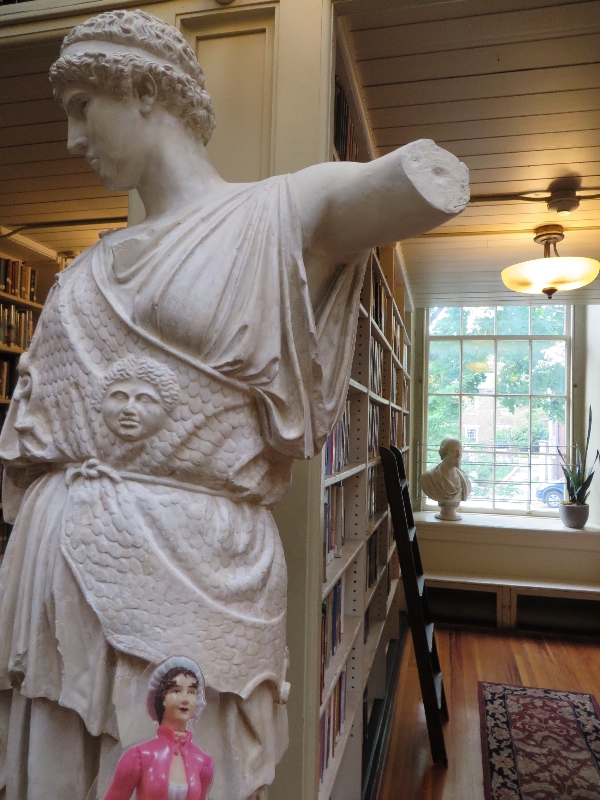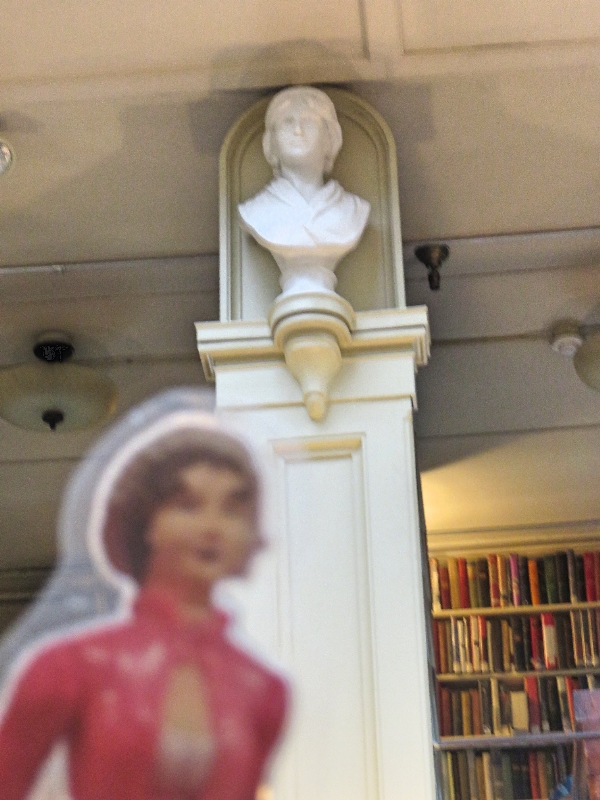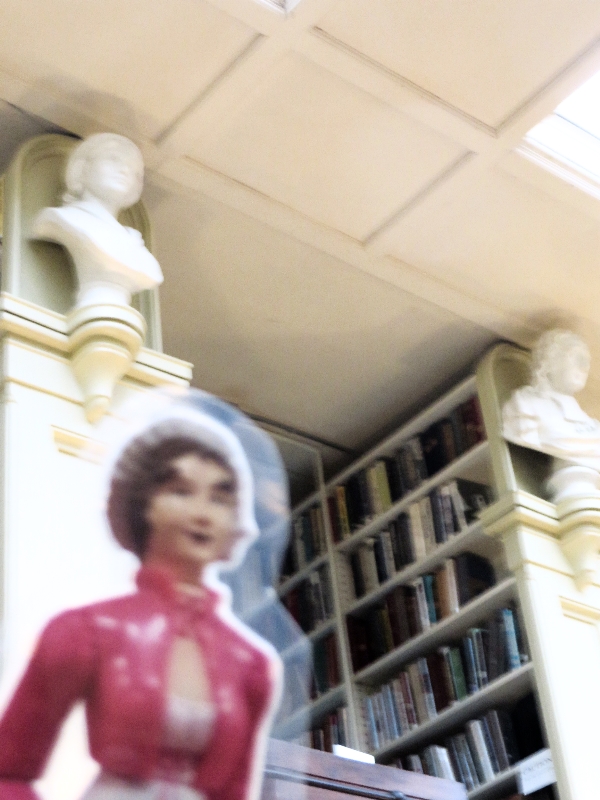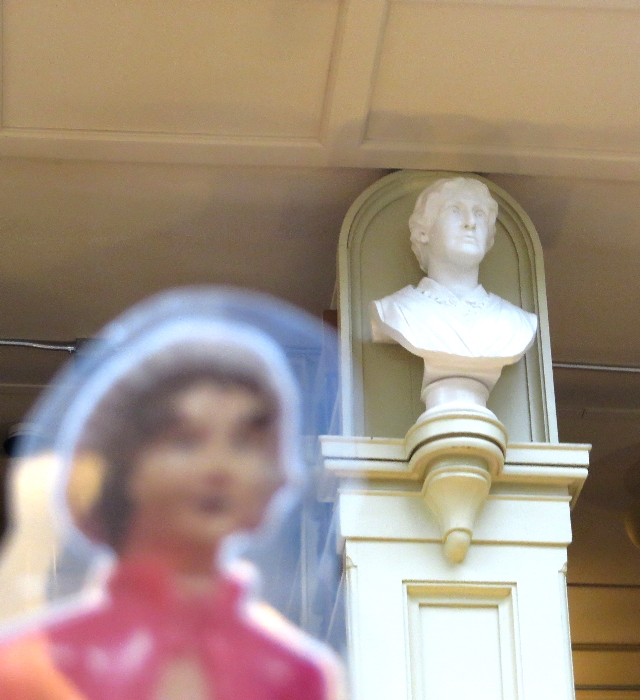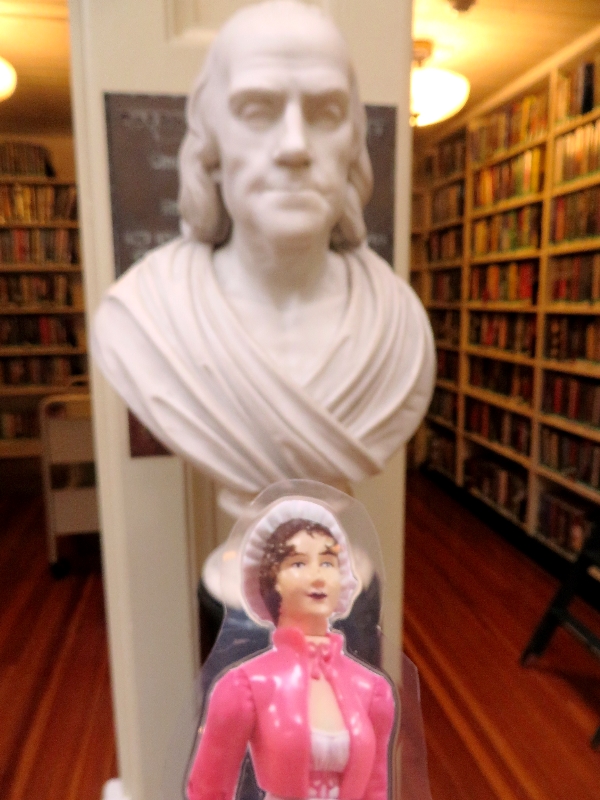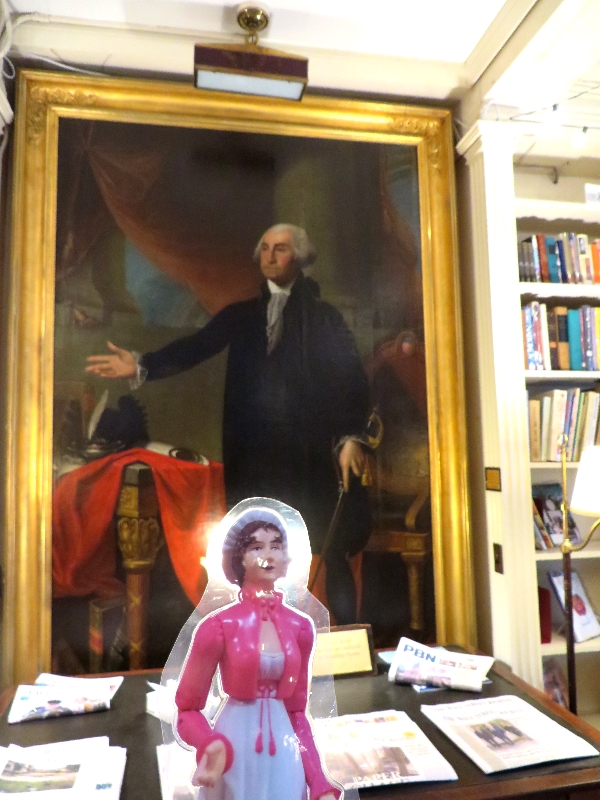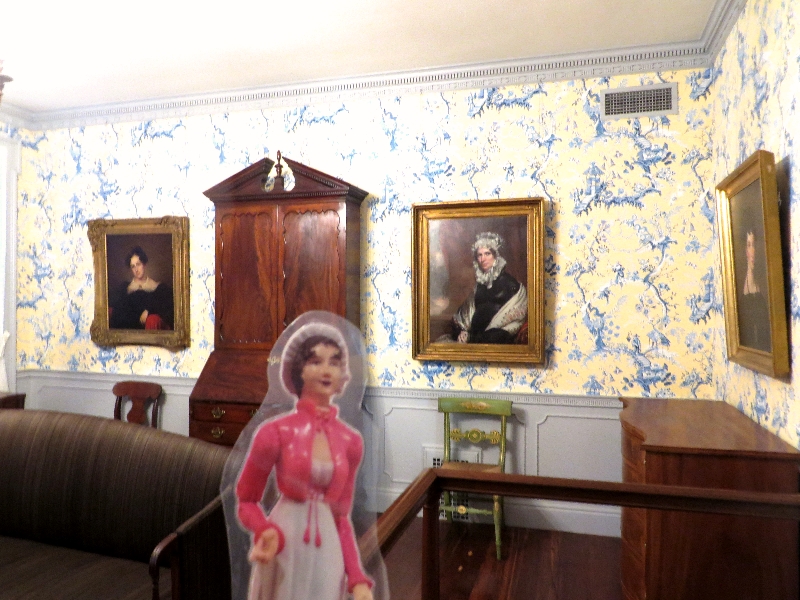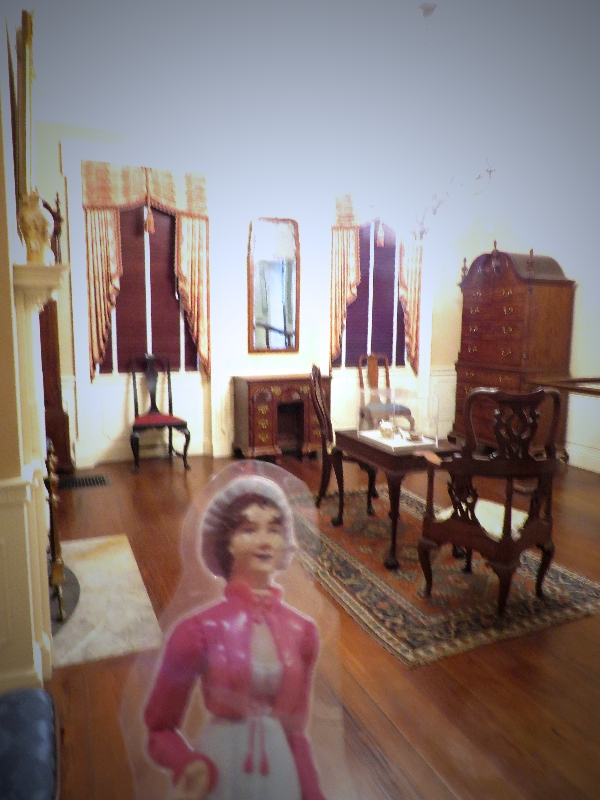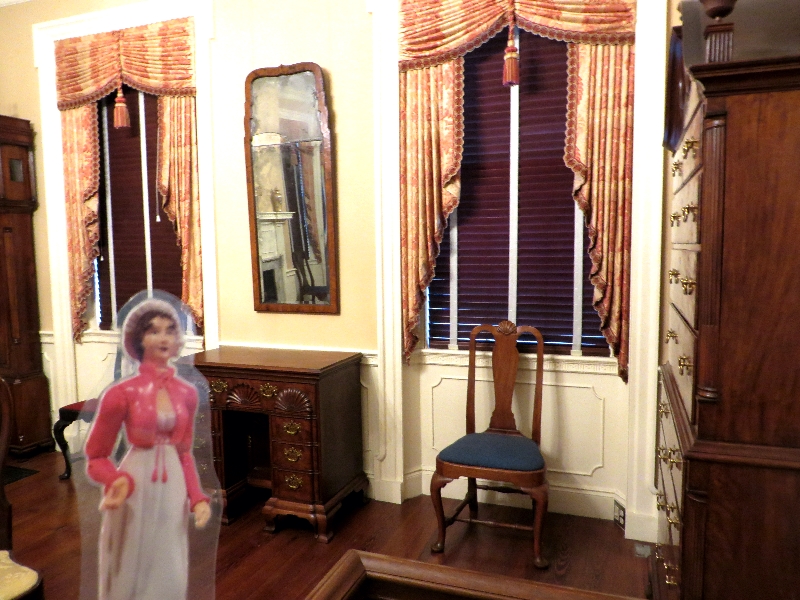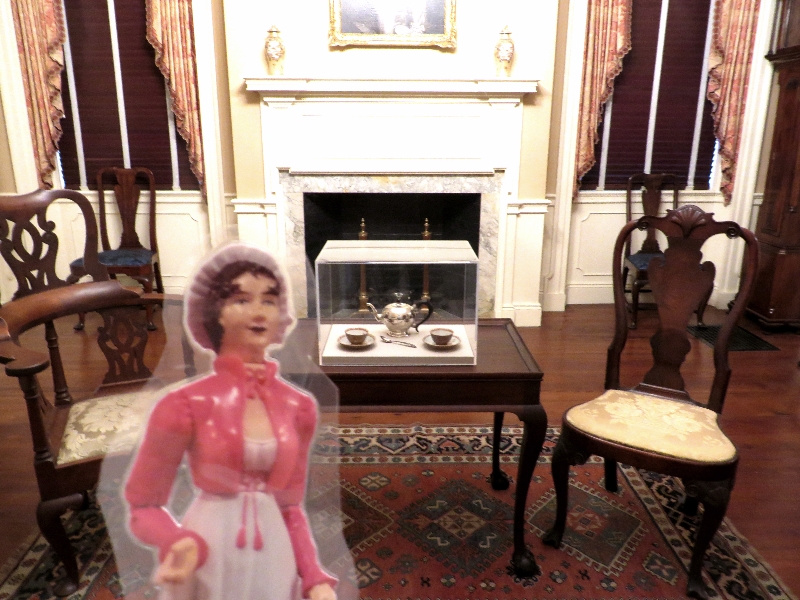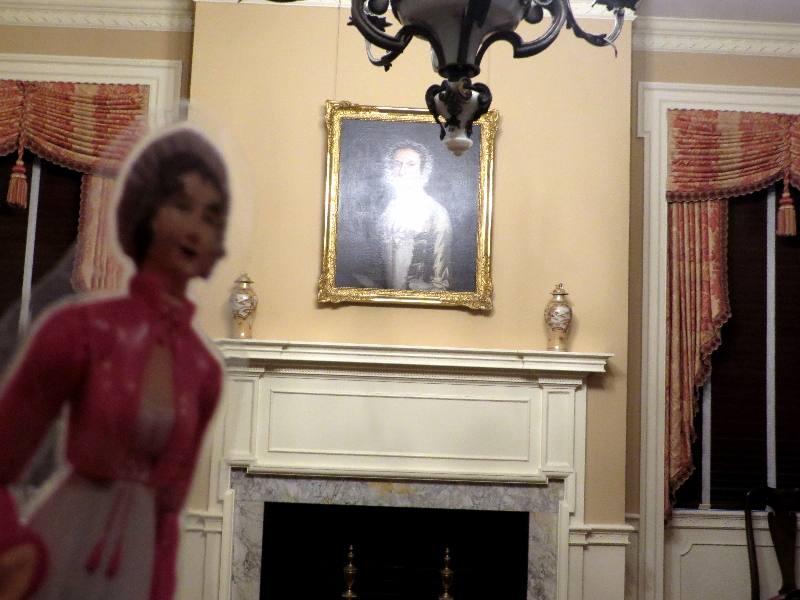Flat Jane Austen in Providence, Rhode Island:
In which Jane pays calls on the elite
Editor's Note: All photos taken inside the Rhode Island School of Design Museum's Pendelton House. Not all these objects belonged to one family or were displayed at the same time. The furniture in this room is in the neoclassical style built between 1785-1845. All pieces are by Rhode Island cabinetmakers.
My dearest friends,
Are you still reading?
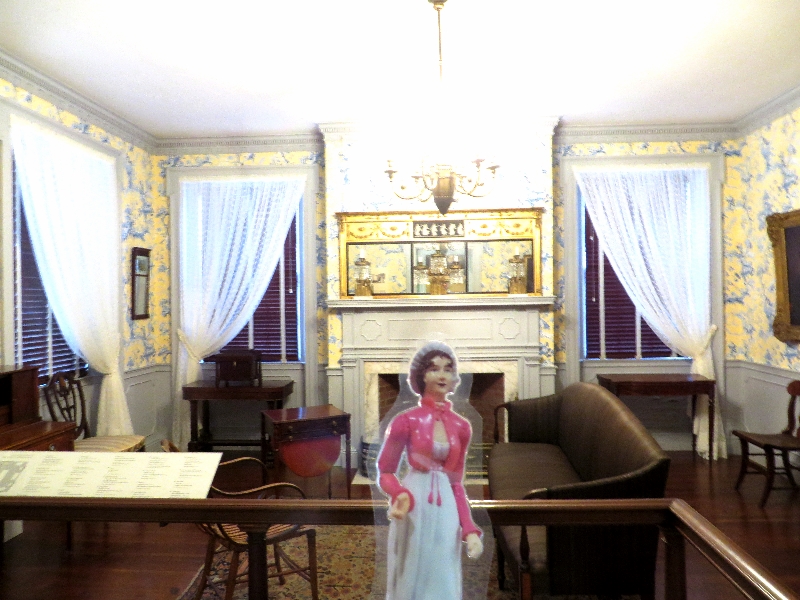 |
| Neoclassical 18th/early 19th-century room |
This is the home of Rev. Stephen Gano. He is quite elderly and their home is furnished in the Neoclassical style of the last century. Dr. Gano is a medical man, a Baptist minister and a freemason. Rumor has it his wife left him believing that as a Freemason, whatever that may be, he was a worshipper of the devil!
His first wife left her mark on the home. Mrs. Allin, the girls and I sit in the ladies' sitting room and work. Behind me you see the sewing table. We do some tambour work while the men discuss theology in Dr. Gano's study. Back in '98 this type of work was new and fashionable, causing a young lady to declare it was "the handsomest thing of the kind" she "ever saw." The table was made by Simeon Hazard of Newport.
The armchair, made in the year '08 in Boston, features a new type of technology. The maker, Samuel Gregg of Boston, calls it "elastic". The chair features a bentwood seat and arms. 'Tis quite comfortable.
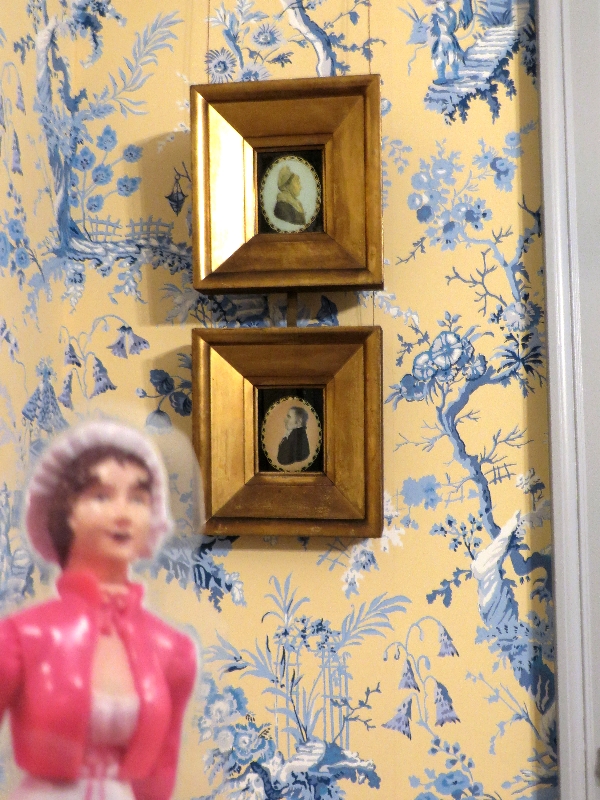 |
| Rev. Stephen and Mary Brown Gano c. 1820; oil and pencil mounted on panel |
Dr. Gano's desk-and-bookcase was made here in town (Providence) in 1785 by John Carlile, Jr. Dr. Gano purchased this new from the cabinetmaker, one of his first pieces. Providence has overtaken Newport as leader of manufacturing and trade.
The wallpaper is a French pattern in Chinese taste. Quite surprising for a clergyman.
Other rooms in the house are not so elegant. Dr. Gano's first wife, Mary, was the daughter of Joseph Brown. She brought with her many family pieces, antiques from the colonial period of the 17th-century.
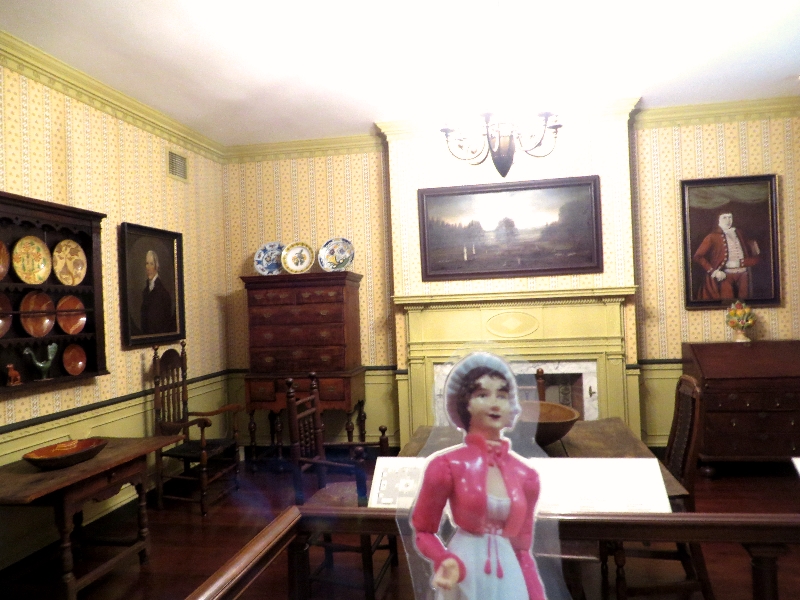 |
| chest with drawer 1710-1740; ceramics from Pennsylvania and New England made from lead-glazed earthenware ca. 1800-1840 |
Editor's note: The 17th-century objects were collected in the early 20th-century during a period of renewed interest in New England history and craftsmanship. The objects also reflect an increasing awareness of folk cultures and objects made by European craftsmen in America. Some collectors collected uniquely American art, folk art, made by people without formal training.
My nieces would say this dining room is positively Gothic! The wallpaper is from the last century at least, while many of the objects are much older.
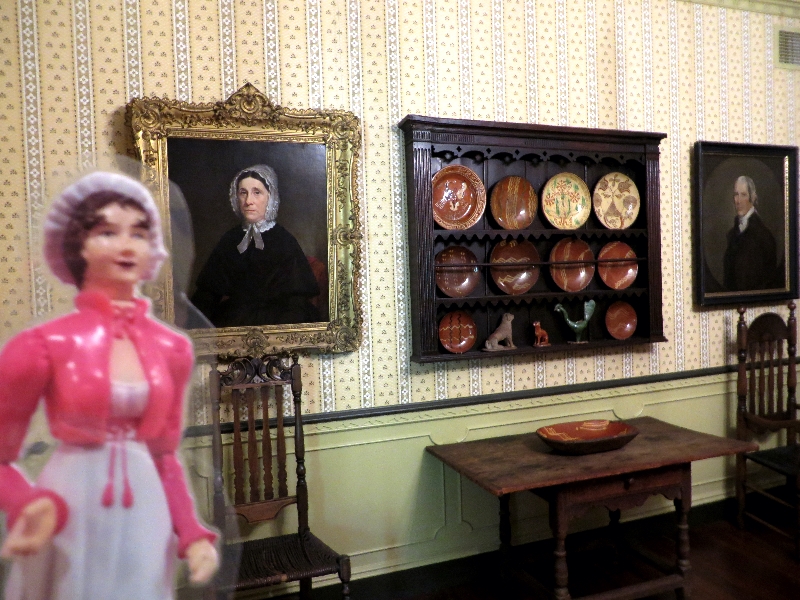 |
| William Jennys, Portrait of Mrs. Israel Ashley ca. 1800; armchair 1730-1800; 18th-19th c. American ceramics; Portrait of Israel Ashley ca. 1800 |
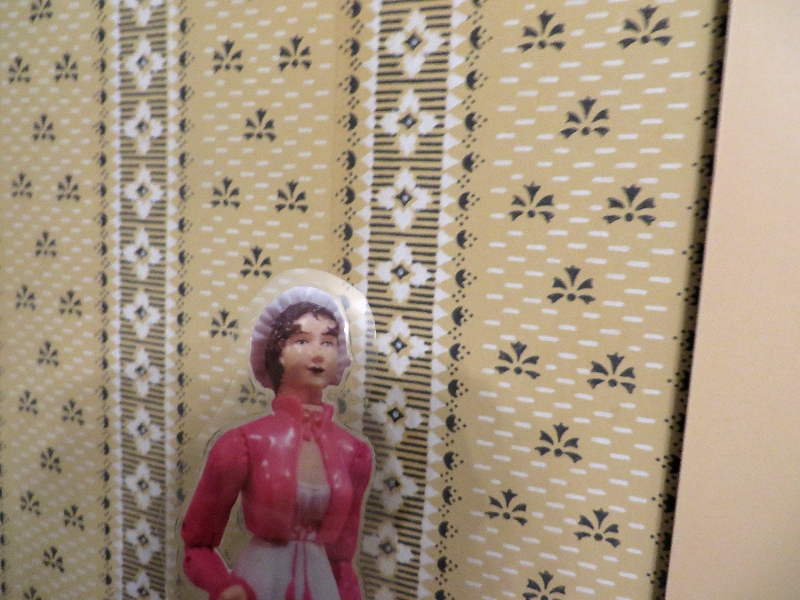 |
| 18th century reproduction New England wallpaper |
The kitchen is such I have never encountered before now.
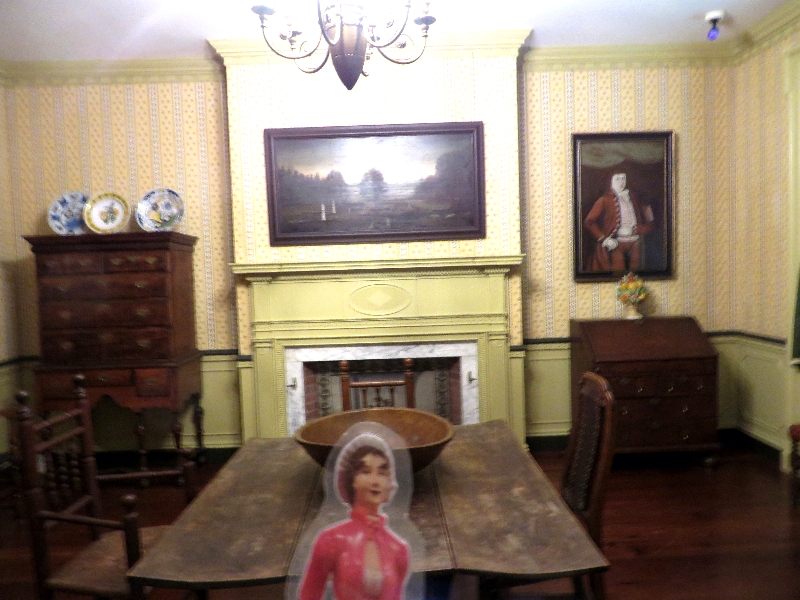 |
Rufus Hathaway, portrait of Seth Winsor ca. 1798; drop leaf table 1700-1735; bowl 19th c.;
Great (Arm) chair ca. 1660-1720 |
Dr. Gano's study features the same wallpaper and period furnishings.
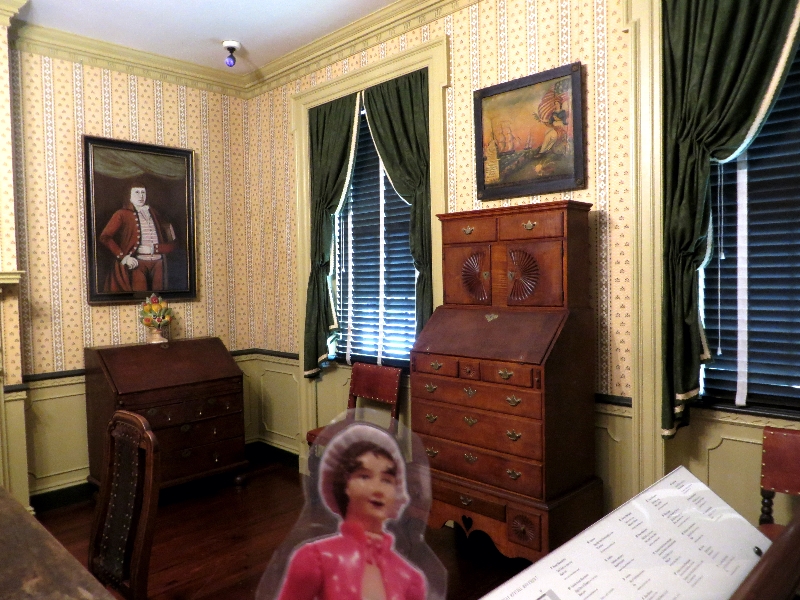 |
painted chalkware ornament of fruit and flowers 19th c.; desk ca. 1740; sidechair 1660-1700;
desk on stand ca. 1900 |
These colonial upstarts are quite proud and firmly believe they beat us in the late wars. They proudly show off their patriotism in their homes.
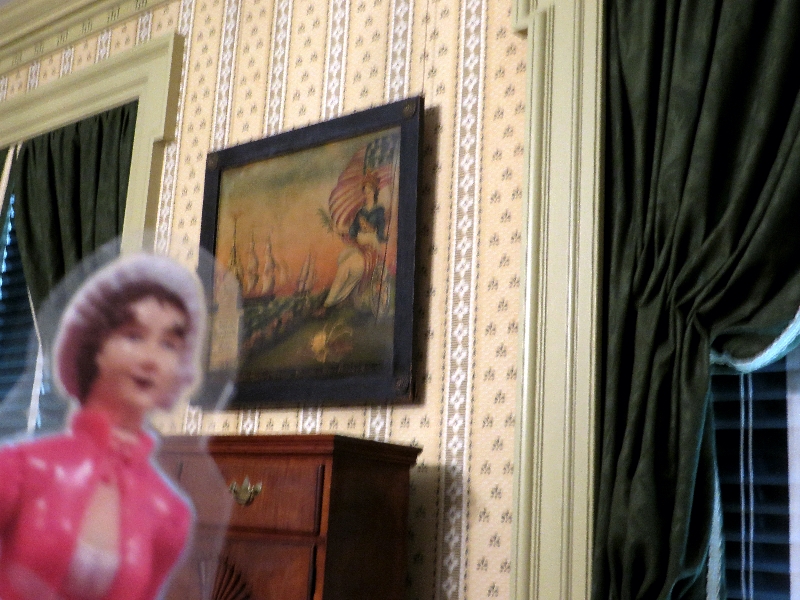 |
| Emblem of the United States of America ca. 1800 |
Thus concludes my visits with the neighbors. I have a few other places of note to show you soon.
Yours,
Jane


